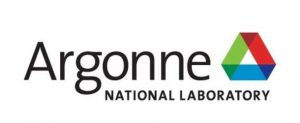Quantum News Briefs October 30: SK telecom to launch subscription-based quantum-safe communication service; BlueQubit’s algorithm chosen by DARPA: leveraging GPU simulators and infrastructure to advance Quantum AI; Argonne researchers report major milestone toward future quantum computing architecture + MORE

Quantum News Briefs October 30:
SK telecom to launch subscription-based quantum-safe communication service
 SK telecom announced on October 26 that it will launch quantum key distribution as a Service (QaaS), a subscription-based quantum-safe communication service, in partnership with quantum company IDQ. Quantum News Briefs summarizes the article written byJeong Ho-jun and Yoon Yeon-hae from South Korea’s Pulse.
SK telecom announced on October 26 that it will launch quantum key distribution as a Service (QaaS), a subscription-based quantum-safe communication service, in partnership with quantum company IDQ. Quantum News Briefs summarizes the article written byJeong Ho-jun and Yoon Yeon-hae from South Korea’s Pulse.
ID Quantique and SK Telecom elebrated the fifth anniversary of their landmark partnership in October this year. Entering a new phase of collaboration, the two companies join forces to accelerate the market adoption of quantum-safe security and quantum sensing solutions through fruitful projects and partnerships. ID Quantique and SK Telecom have successfully delivered several innovative projects, beginning in 2019 when IDQ’s Quantum Key Distribution (QKD) technology was deployed over SK Telecom’s 5G backbone.
The company plans to expand QaaS going forward, focusing on customers that require high security, such as in the public, medical, and financial sectors
QaaS was first applied to global data center company Equinix Inc.’s SL1 Data Center in Sangam-dong, western Seoul. It is used to secure data centers that store large amounts of data and run artificial intelligence (AI) infrastructure. Click here for original Pulse article in-entirety.
BlueQubit’s algorithm chosen by DARPA: leveraging GPU simulators and infrastructure to advance Quantum AI

BlueQubit Inc., a technology company building quantum software and infra, ha announced its selection for the prestigious Defense Advanced Research Projects Agency (DARPA) project under the Imagining Practical Applications for a Quantum Tomorrow (IMPAQT) program. Quantum News Briefs summarizes.
This recognition emphasizes the company’s unwavering commitment to revolutionizing the quantum computing landscape, with a focus on development of quantum AI/ML algorithms for Noisy Intermediate-Scale Quantum (NISQ) devices.
Particularly noteworthy is BlueQubit’s collaboration with the renowned quantum hardware company,  QuEra. Their shared expertise on neutral-atom quantum computers – known for their scalability and improved gate fidelity – is central to the project.
QuEra. Their shared expertise on neutral-atom quantum computers – known for their scalability and improved gate fidelity – is central to the project.
“We’re on the cusp of a quantum leap in computing, and the DARPA IMPAQT award is a testament to the potential our team brings,” – Hrant Gharibyan. BlueQubit, with its collaborative network of esteemed researchers from leading US institutions and tech maestros in high-performance computing, is poised to overcome classical limitations and march toward quantum advantage with innovation in hybrid quantum/classical computing approach.
BlueQubit Inc. extends its gratitude to DARPA for this opportunity and remains steadfast in its mission: pushing the boundaries of quantum computing and setting new industry standards.
Click here to read complete announcement.
Argonne researchers report major milestone toward future quantum computing architecture
 A team led by the U.S. Department of Energy’s (DOE) Argonne National Laboratory has achieved a major milestone toward future quantum computing. They have extended the coherence time for their novel type of qubit to an impressive 0.1 milliseconds — nearly a thousand times better than the previous record. Quantum News Briefs summarizes the ScienceDaily article.
A team led by the U.S. Department of Energy’s (DOE) Argonne National Laboratory has achieved a major milestone toward future quantum computing. They have extended the coherence time for their novel type of qubit to an impressive 0.1 milliseconds — nearly a thousand times better than the previous record. Quantum News Briefs summarizes the ScienceDaily article.
The team’s qubits encode quantum information in the electron’s motional (charge) states. Because of that, they are called charge qubits.
“Among various existing qubits, electron charge qubits are especially attractive because of their simplicity in fabrication and operation, as well as compatibility with existing infrastructures for classical computers,” said Dafei Jin, a professor at the University of Notre Dame with a joint appointment at Argonne and the lead investigator of the project. “This simplicity should translate into low cost in building and running large-scale quantum computers.
The team’s qubit is a single electron trapped on an ultraclean solid-neon surface in a vacuum. The neon is important because it resists disturbance from the surrounding environment. Neon is one of a handful of elements that do not react with other elements. The neon platform keeps the electron qubit protected and inherently guarantees a long coherence time.
Following continued experimental optimization, the team not only improved the quality of the neon surface but also significantly reduced disruptive signals. As reported in Nature Physics, their work paid off with a coherence time of 0.1 milliseconds. That is about a thousand-fold increase from the initial 0.1 microseconds. Click here to read the ScienceDaily in-entirety.
Chinese researchers announce record-breaking quantum teleportation achieved over metropolitan range
 A team of scientists, led by Prof. Guangcan Guo and Prof. Qiang Zhou from the University of Electronic Science and Technology of China (UESTC) cooperating with Prof. Lixing You from the Shanghai Institute of Microsystem and Information Technology of the Chinese Academy of Sciences, have improved the teleportation rate to 7.1 qubits per second for the first time based on the “No. 1 Metropolitan Quantum Internet of UESTC”. This presents a new record for the quantum teleportation system over metropolitan range. Quantum News Briefs summarizes the SciTech October 19 announcement.
A team of scientists, led by Prof. Guangcan Guo and Prof. Qiang Zhou from the University of Electronic Science and Technology of China (UESTC) cooperating with Prof. Lixing You from the Shanghai Institute of Microsystem and Information Technology of the Chinese Academy of Sciences, have improved the teleportation rate to 7.1 qubits per second for the first time based on the “No. 1 Metropolitan Quantum Internet of UESTC”. This presents a new record for the quantum teleportation system over metropolitan range. Quantum News Briefs summarizes the SciTech October 19 announcement.
Demonstrating high-speed quantum teleportation outside of a laboratory involves a whole set of challenges. This experiment shows how these challenges can be overcome and hence it establishes an important milestone towards the future quantum internet,” said Prof. Qiang Zhou, who is the corresponding author of this work. The main experimental challenge in a real-world quantum teleportation system is performing the Bell state measurement (BSM).
In order to ensure the successful quantum teleportation and improve the efficiency of BSM, Alice’s and Bob’s photons need to be indistinguishable at Charlie after long-distance transmission in fiber. The team developed a fully running feedback system, which realized the fast stabilization of the path length difference and polarization of the photons.
The team employed both quantum state tomography and decoy-state methods to calculate the teleportation fidelities, which were well above the classical limit (66.7%), confirming that high-speed metropolitan quantum teleportation has been achieved.
The “No. 1 Metropolitan Quantum Internet of UESTC” is expected to develop a “high speed, high fidelity, multi-users, long-distance” quantum internet infrastructure in the future by combining integrated quantum light sources, quantum repeaters, and quantum information nodes. The team also forecasts that this infrastructure will further promote the practical application of quantum internet. Click here to read the complete SciTech article.
Sandra K. Helsel, Ph.D. has been researching and reporting on frontier technologies since 1990. She has her Ph.D. from the University of Arizona.



















